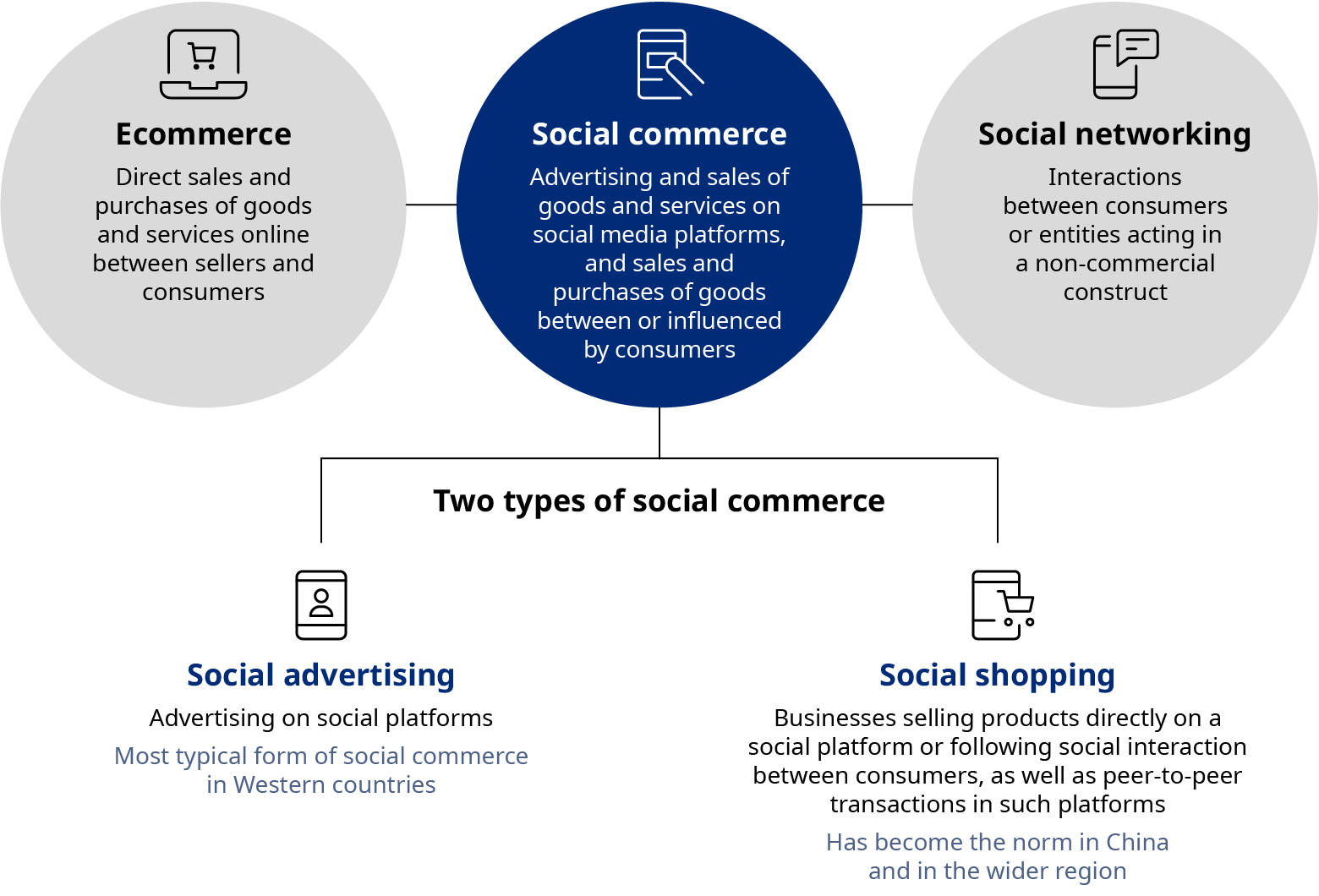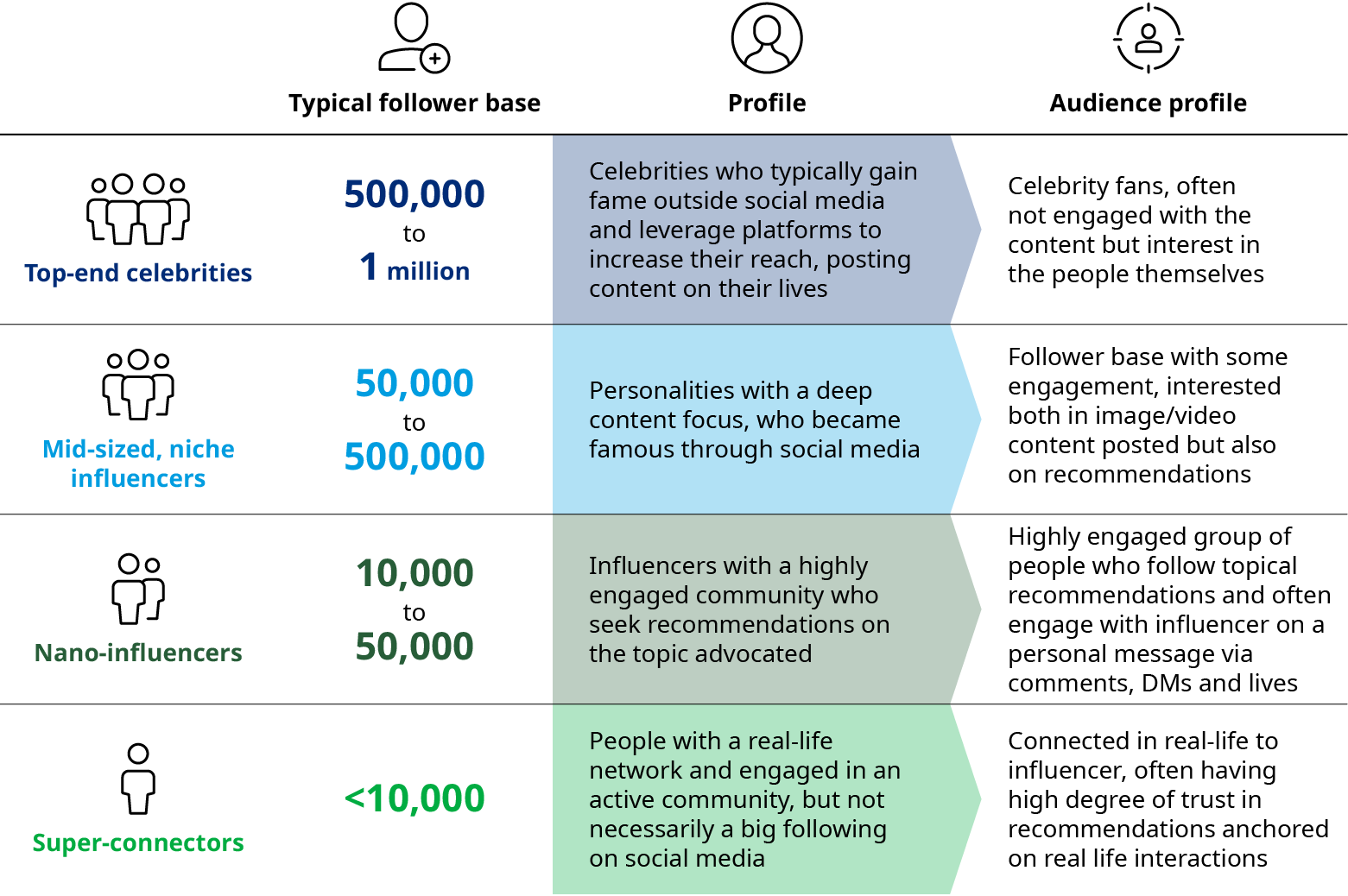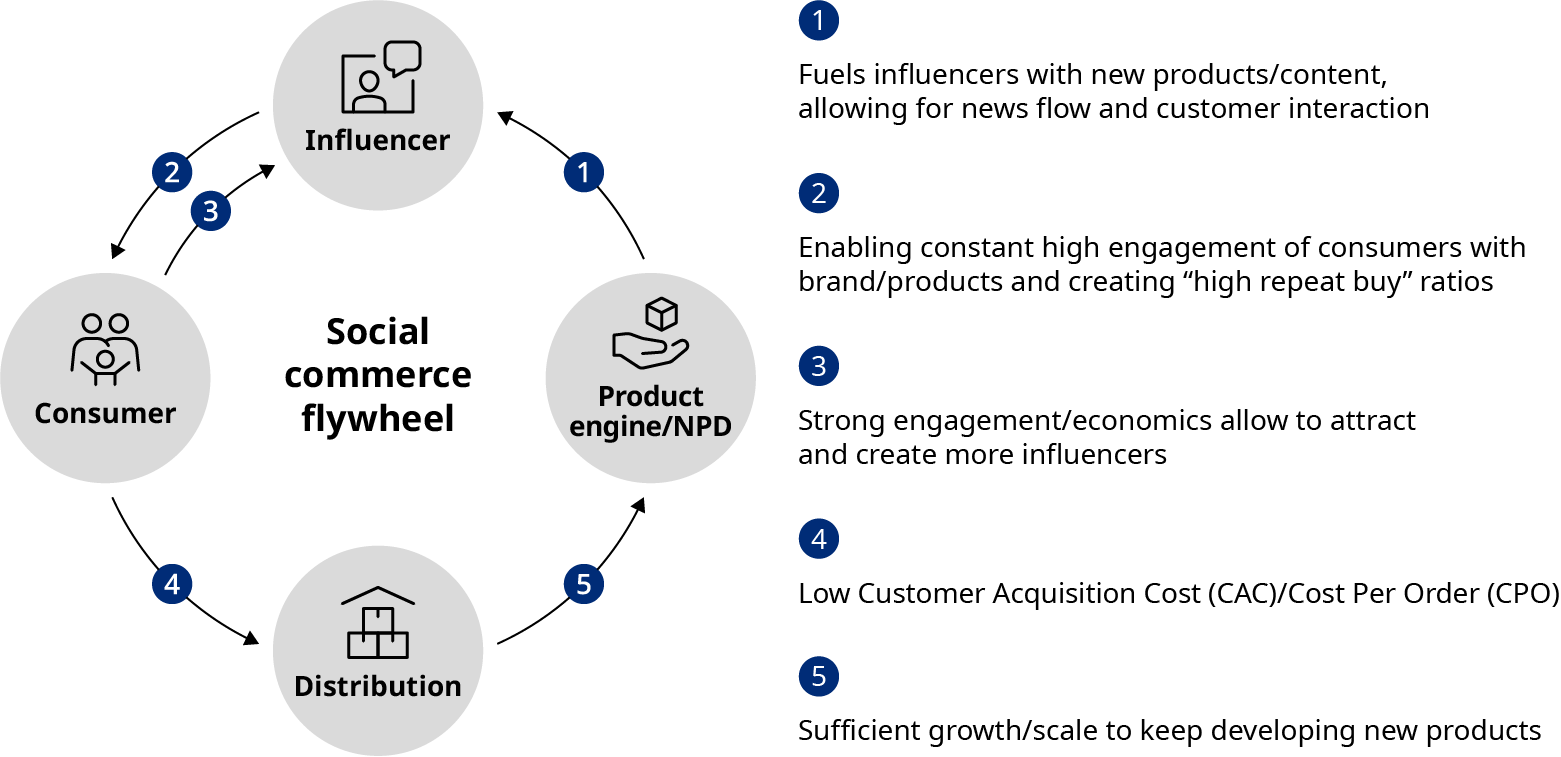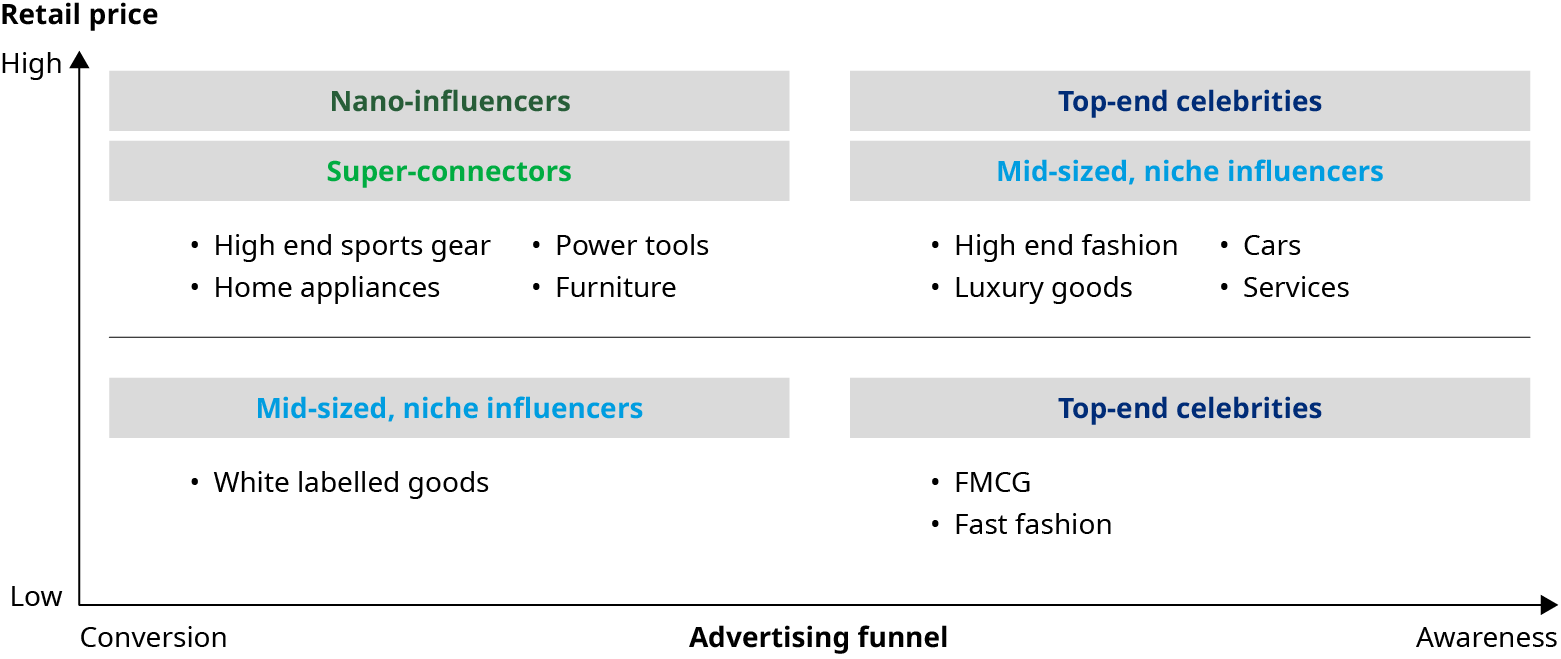Social commerce (buying and selling within a social platform) is quickly becoming one of the most important ways for businesses to reach consumers. Consumer brands that have not embraced the idea of selling products and services through social networks risk missing out on important revenues and lagging behind their competitors. This article lays out strategies for businesses to follow as they develop a comprehensive strategy for making the most of social commerce.

The level of adoption of social commerce varies worldwide. Many Asian markets, for instance, have hastened the integration of social networks and ecommerce. Platforms provide consumers with a seamless experience where shopping features are integrated directly into the social platform. With a couple of clicks, users can go from watching a viral video from an influencer or content creator recommending a product, to putting the product in their basket and checking out, all without ever leaving the platform.
Social commerce trends across the globe
In contrast, many Western economies have yet to embrace that level of integration. Most of the influencer effort in Western countries is on the social advertising side — endorsements for products and brands on social platforms like YouTube and Instagram, for which an influencer is paid a fixed fee per post, story, or mention. But the consumer must click or search for the product and leave the social network in order to complete a purchase. This model is becoming increasingly less attractive for brands as influencer cost per mille (CPM), or cost per thousand impressions, have been steadily rising over the past years, with some sources pointing to CPMs doubling since 2018.
Engaging followers under this model is challenging, especially for those with a click-to-convert proposition. Our observations suggest, followers are often most interested in the influencer’s lifestyle itself, and not the products recommended. Consumers are also getting savvier and seeing through paid posts and are therefore unlikely to engage to the same extent as with regular content from the creator. Attempts have been made to experiment with pay-for-performance arrangements, but these have met with limited success. Current market trends indicate, most influencers remain reluctant to accept such arrangements, as it would require them to be pushy towards their followers and in effect, dilute their personal brand. Consequently, this leads to high CPMs for endorsements and low return on investment (ROI) for conversion campaigns.
The rise and impact of nano-influencers
As the social commerce space evolves, we are seeing new types of influencers emerge. Nano-influencers, typically boasting 10,000 to 50,000 highly engaged followers in a specific topic, represent an appealing segment in the realm of social shopping. Their interactions with followers are far more focused and intimate. This is especially relevant for products with a high retail price where a trusted recommendation is key to encouraging trial.

New commercial models are also emerging, presenting a fresh opportunity in the hunt for higher ROIs. One such model, predominately driven by nano-influencers, can be best described as social commission-based selling. Given their higher conversion rates and focused audiences, it is logical that nano-influencers are much more likely to accept pay-for-performance terms. This allows them to receive a higher upside, in the form of a pre-agreed percentage of the sales volume they generate through their platforms. This contrasts with top-end celebrities who know they can simply monetize their larger reach.
How super-connectors drive growth in social networks
Some nano-influencers have built and grounded their followership based on real-life networks, which are then grown via social media. We call these influencers super-connectors. Their approach resembles some of the best go-to-market principles associated with multi-level marketing.
This is effectively a way of building a field sales force operating on commission, using their networks to promote and sell products and services. This is especially relevant for higher margin categories or longer-term subscription services. In some instances, these social sellers have used this opportunity as a platform to significantly increase their follower count. In best case scenarios, a symbiotic partnership is formed between sellers and super-connectors, with each contributing to the other’s success.
One example is a fast-growing European sports nutrition brand, which has deployed a structured approach to identify influencers that align with their brand values and product portfolio, manage them through pay-for-performance schemes, provide coaching and support and produce much of the content for them directly. Such models turn influencers into entrepreneurs, incentivizing them to create close engagement with their followers to drive conversion.

Influencer marketing strategy for ROI optimization
Nano-influencers and super-connectors can represent a new, highly effective sales force for manufacturers and retailers. However, this is not a one-size fits all approach. Traditional mid-sized and top-end influencers can still provide relatively high ROI, particularly when the focus is on creating awareness at scale. The key lies in choosing the right type of approach, taking into account the retail value of the products being advertised and where in the advertising funnel the campaign is targeted at.

Opportunities and challenges with nano-influencers
There are still some challenges to be addressed when working with nano-influencers. Setting fair pay-for-performance terms that lead to a high ROI while keeping influencers engaged is not trivial. In other words, brands will have to increasingly be able to determine the fair market value of influencers and their engagements before agreeing to commission rates. This can change through the lifecycle of businesses, with commissions high at first, and then declining as the brand gains more stature in the marketplace.
Finding the right influencers who target the right follower base can also prove difficult. Ideally, brands will partner with influencers who can reach the right audiences, while proving to be valuable partners for a long-term collaboration.
Additionally, from an operational perspective, having to deal with several influencers simultaneously makes sales operations more complex, given the large number of partnerships to be managed to reach similar audiences as a smaller set of high-reach influencers would. There is also an increased challenge of managing brand risk associated with a higher number of partners, who ultimately are associated with the brands they are recommending.
Despite the challenges, new influencer marketing models have the potential to transform the way manufacturers and retailers can accelerate their businesses.

